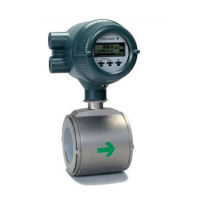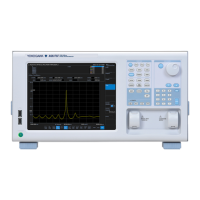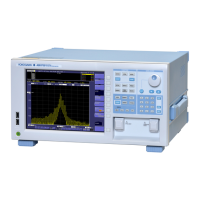
Do you have a question about the YOKOGAWA ADMAG AXF Series and is the answer not in the manual?
| Brand | YOKOGAWA |
|---|---|
| Model | ADMAG AXF Series |
| Category | Measuring Instruments |
| Language | English |
Information on how to use this manual, its contents, and copyright.
Essential safety instructions for installation, wiring, operation, and maintenance.
Details on the product warranty period, coverage, and exclusions.
Information on compatible remote flowtubes for the AXFA14 converter.
Overview of Fieldbus as a bi-directional digital communication protocol.
Explanation of the AXF's internal structure with Virtual Field Devices.
Diagram illustrating the logical structure of Fieldbus blocks within the AXF.
Considerations for designing Fieldbus wiring systems for optimal performance.
Requirements and procedures for connecting Fieldbus devices, host, and cable.
Procedures for setting up the host for Fieldbus activation.
Steps to power on the host, bus, and AXF for operation.
Process for integrating Device Description files for AXF display and configuration.
Basic operation for reading AXF parameters from the host.
Using host function to continuously record indications and values.
How alarms can be generated from AXF and reported to the host.
Steps to design the Fieldbus network, including power supply and device selection.
Defining PD Tags and node addresses for all Fieldbus devices.
How to combine function blocks and set the AXF schedule.
Procedure to set PD Tags and node addresses for AXF devices.
Setting up Virtual Communication Relationships (VCRs) for communication.
Setting parameters for function block VFDs, including Link Objects.
Combining function block parameters with VCRs using Link Objects.
Setting parameters for function blocks to automatically transmit Trend data.
Grouping parameters into View Objects for efficient data transactions.
Overview of parameters for Resource, Transducer, AI, and DI blocks.
Chapter overview covering basic TR, AI, DI blocks, and indicator displays.
Procedure for modifying process parameters, including block mode changes.
Explanation of parameters specific to the ADMAG AXF transducer block.
Details on parameters for the AI function block, including simulation.
Explanation of parameters for DI function blocks, including alarm settings.
Information on the LCD indicator's display capabilities and modes.
How flow data is displayed on the LCD with selectable lines and units.
Overview of available display modes: Normal, Alarm, Warning, and Autozero.
Procedure for changing function block modes between Out_Of_Service, Manual, and Auto.
How alarms are generated and reported by the AXF.
How alarms and error numbers are indicated on the LCD.
Types of alerts (Analog, Discrete, Update) reported by the AXF.
How to use the simulation function for testing blocks and alarm processes.
Explanation of device status parameters (DEVICE_STATUS_1 to 7) in the Resource Block.
Summary of parameter values and LCD indications during failure modes.
Detailed list of parameters for the Resource Block, including write modes and explanations.
Detailed list of parameters for the Transducer Block, including write modes and explanations.
Detailed list of parameters for the AI Function Block, including write modes and explanations.
Detailed list of parameters for the DI Function Block, including write modes and explanations.
General technical specifications, applicable models, output, and supply voltage.
Details on optional features like PID function and software download class.
Terminal configurations and wiring for Integral Flowmeter AXF and Remote Converter AXFA14.
Overview of basic parameters and their applications for setup.
Procedure for setting and changing basic parameters, including block mode.
Step-by-step guide to setting AI function block parameters for flow rate signals.
Guide to setting Transducer block parameters like damping time and limit switches.
Procedure for setting up the Integrator (IT) function block for flow totalization.
Steps for setting DI function block parameters, including channel and simulation.
Visual representation of the Integrator (IT) block's internal structure and flow.
Details on input processing, including status determination and conversion.
Correlation between input statuses and how they are handled by the IT block.
Example of how rate conversion is performed for input values.
Example of accumulation conversion for counter input.
How the IT block determines input flow direction using REV_FLOW parameters.
Explanation of the adder function and how it processes inputs.
How the status of the adder's output value is determined.
Available options for addition within the Integrator block.
Explanation of integration types and how they are set using INTEG_TYPE.
Details on the output parameters (OUT, OUT_TRIP, OUT_PTRIP) and their status determination.
Criteria for determining the status of output parameters based on PCT_INCL, UNCERT_LIM, and GOOD_LIM.
How the OUT value is determined for counting up and counting down.
How the Integrator block handles mode transitions between Auto, Manual, and O/S.
Overview of reset functions for the Integrator block.
Types of triggers that initiate a reset process.
Timing considerations for reset operations, including 5-second rule and CLOCK_PER.
Sequence of steps involved in the reset process.
Comprehensive list of parameters for the Integrator block.
Visual representation of the Arithmetic (AR) block's schematic.
Explanation of the AR block's input section, including range extension.
Details on main inputs (IN, IN_LO) and range extension function.
Explanation of bias and gain parameters for auxiliary inputs.
Options for handling input statuses (uncertain/bad) as good.
How main input statuses and options determine the PV value and status.
Details on computing equations, compensated values, and average calculation.
List of various computing equations used in the AR block.
How values are restricted by COMP_HI_LIM or COMP_LO_LIM.
Explanation of average calculation and input counting.
Explanation of how gain and bias are applied, and output limitation.
How the AR block handles mode transitions.
How input statuses and options affect PV and output statuses.
Comprehensive list of parameters for the Arithmetic block.
Explanation of the deterministic, centralized bus scheduler (LAS) functions.
Definition of a Link Master (LM) and its role in the network.
Procedures for an LM to become the LAS and backup mechanism.
List and description of various functions supported by Link Masters.
Overview of LM parameters and their settings.
Detailed list of LM parameters with their index, default settings, and access.
Detailed descriptions of various LM parameters.
Frequently asked questions regarding LAS and LM functionalities.
Diagram illustrating the functional components of a PID block.
Overview of the various functions provided by a PID block.
Table listing PID block parameters, write modes, valid ranges, and descriptions.
Details on PID computation algorithms and parameters.
Explanation of the I-PD control algorithm used in Auto/RCas modes.
Table of PID control parameters like GAIN, RESET, and RATE.
How the final control output (OUT) is computed using PID algorithms.
Explanation of the velocity type output action for PID control.
How the direction of control action is determined by the Direct Acting setting.
How to bypass PID computation by setting SP value to OUT.
Explanation of feed-forward action for adding compensation to PID output.
Overview of the parameter MODE_BLK and the eight available block modes.
Table detailing mode transitions and their conditions.
Preventing sudden changes in control output during mode transitions.
Active setpoint limiters that restrict SP value changes based on block mode.
Action of outputting remote TRK_VAL when block mode is LO.
Equalizing setpoint SP to measured value PV for smooth mode changes.
Actions taken when PID block changes mode to IMan for abnormality handling.
Action where PID block changes mode to Man and suspends control.
Action where PID block changes mode from Cas to Auto for automatic control.
How PID block modes change based on SHED_OPT settings during computer failure.
Specifications for mode shedding based on SHED_OPT settings.
Types of alarms generated by a PID block: block and process alarms.
Generation of block alarms based on BLOCK_ERR values.
Six types of process alarms with priority levels and causes.
Example configuration for a PID control loop with AI and AO blocks.
Table showing View Object parameters for the PID Function Block.
Advantages of downloading software to field devices for updates and optimization.
Current draw and download class specifications for software download.
Required tools and files for software downloading.
Flowchart outlining the software download procedure.
Information on the naming convention and types of download files.
Actions to take after activating a device with new software.
Common problems and remedies related to software download.
Parameters in the Resource Block relevant to software download.
System/Network VFD parameters associated with software download.
Comments on system/network management VFD parameters for software download.











